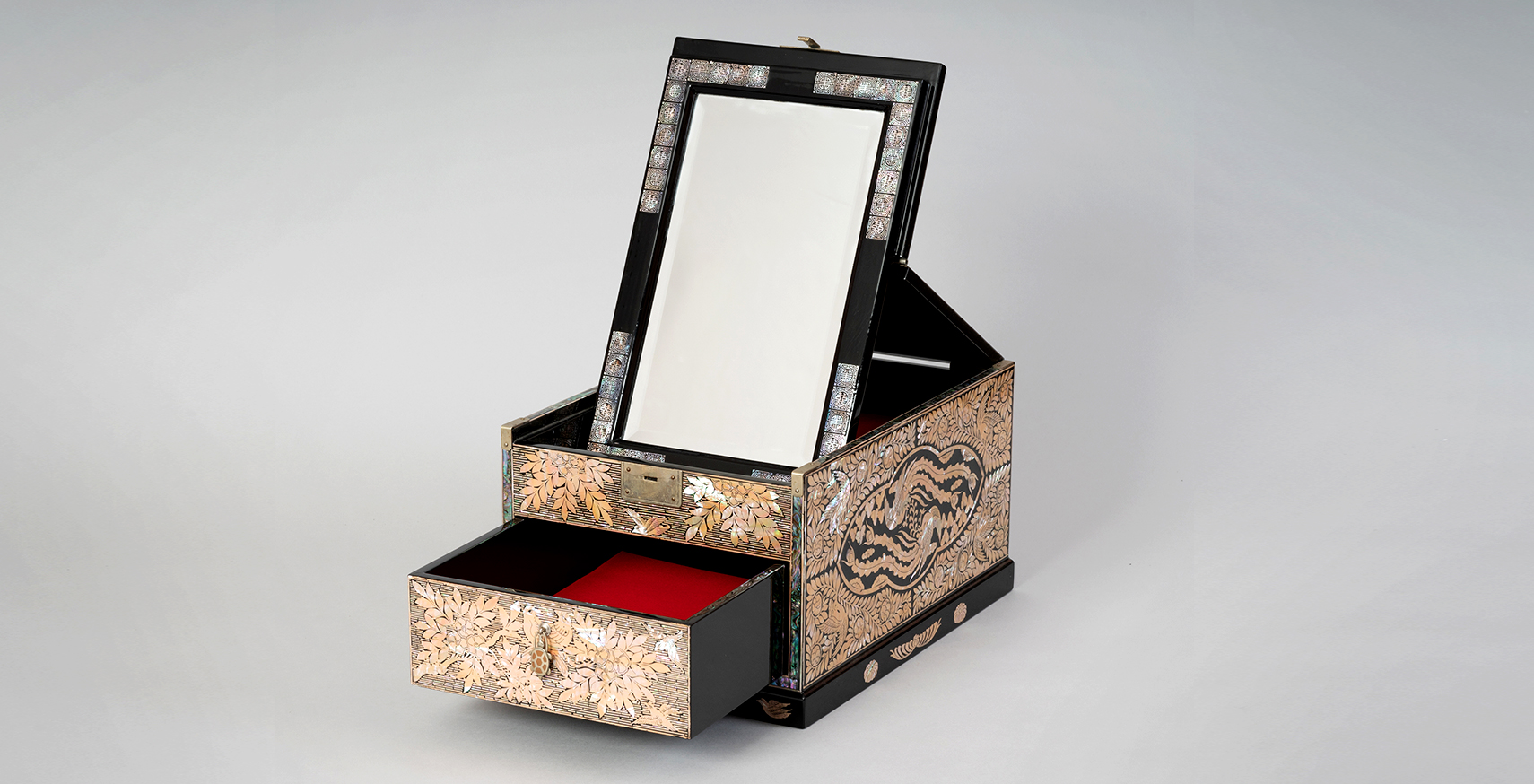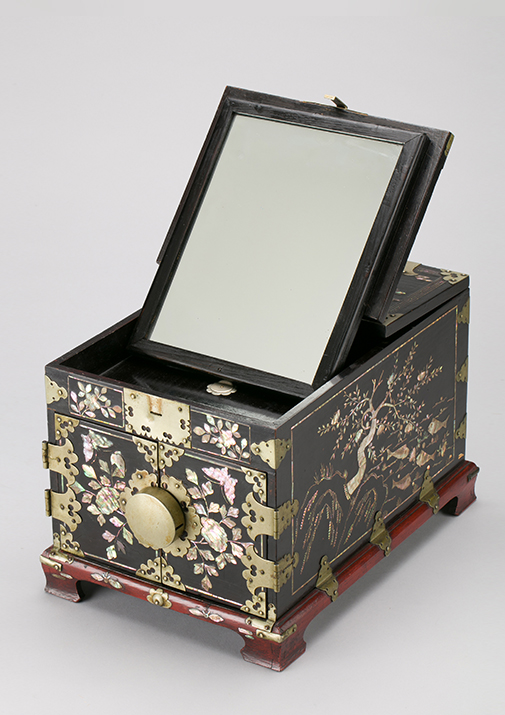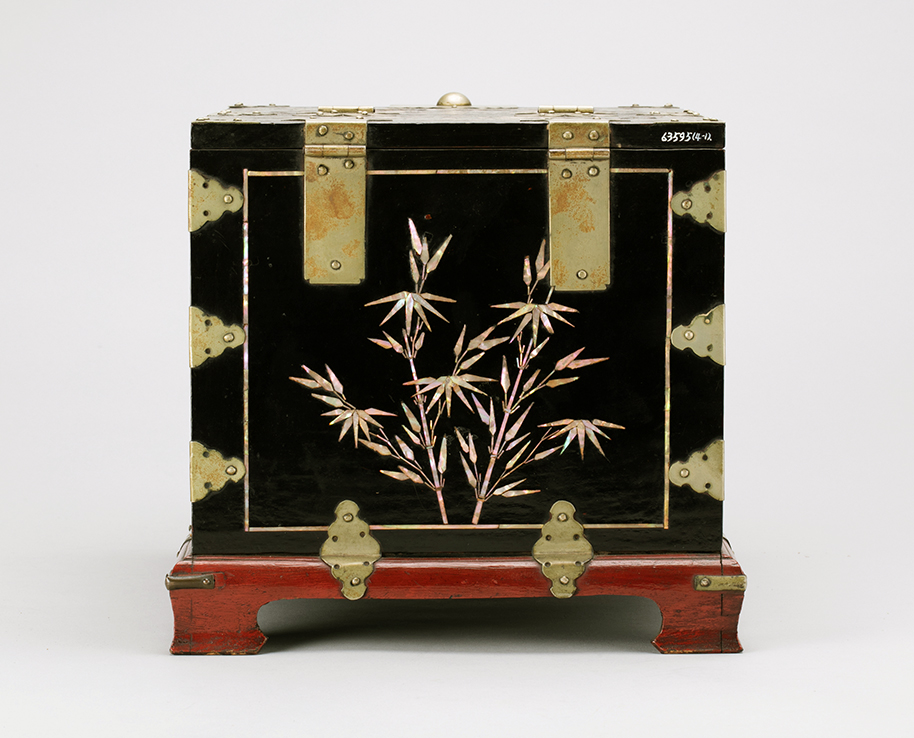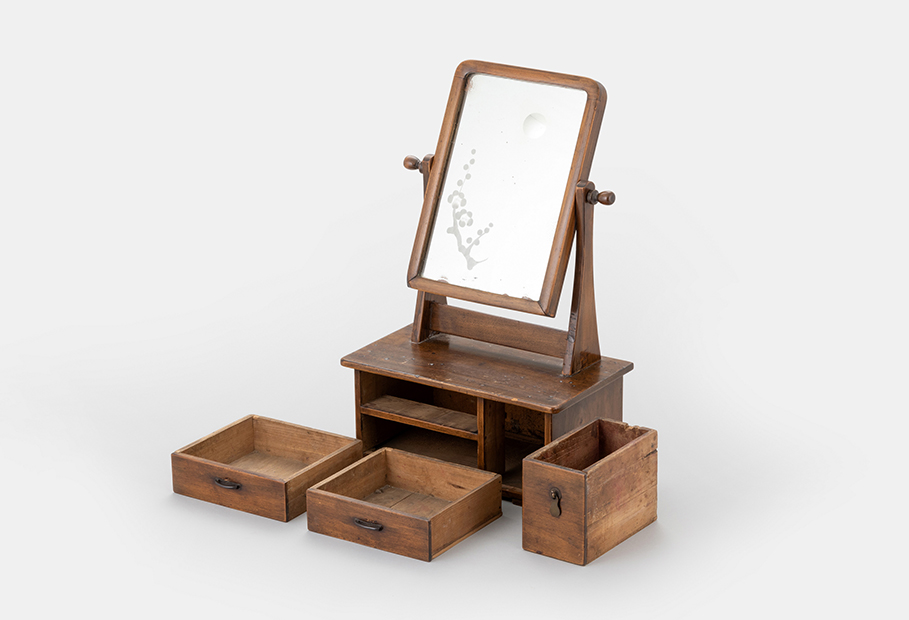March 2021

March 2021
While wall-mounted mirrors were once a rarity in Korea, an ingenious foldable piece of furniture called jwagyeong was indispensable for many — and helped folk conform to key Confucian values.
Written by
Tim Alper
Photo Courtesy of
National Folk Museum
of Korea

In today’s Korea, you will find mirrors everywhere. Contemporary Koreans make use of them all day long. Skillful subway or bus commuters spend their morning journeys meticulously applying makeup using small mirrors that fit neatly in pockets — or even their phone cameras! Not to mention the fitness-conscious who check their posture and monitor muscle growth in Pilates studios and gyms fitted with giant mirrors that fill entire walls.
But all of these are very much modern developments. In the Goryeo Dynasty (918-1392), Buddhism was the state religion. And during the long reign of the Joseon rulers (1392-1910), Confucian values became integral to society. Both of these worldviews downplayed the need for mirrors. Buddhist theories taught that the self was an artificial or illusory concept. The Confucians, meanwhile, believed that vanity was undesirable, and considered grooming in front of mirrors to be an unworthy activity.
So while 17th and 18th-century European monarchs like Louis XIV and Peter the Great were constructing veritable monuments to narcissism in the form of the Hall of Mirrors at Versailles and the Peterhof Palace in Saint Petersburg — and nobles in England and Holland were filling stately homes with giant, gold-framed mirrors — in Korea, the ruling classes ostensibly did the polar opposite.


Ostensibly, however, is the operative word. Although you will find no showy halls of mirrors in Gyeongbokgung Palace or Korea’s other such palaces, it is wrong to assume that Koreans made no use of mirrors at all. In fact, mirrors played a key role in the daily life of scores of Koreans in the Joseon era — usually behind carefully closed doors.
Rather than the wall-mounted mirrors so popular in other parts of the world, craftspeople of the Joseon period created an innovation that was a perfect fit for the predominant Confucian philosophy: the jwagyeong.
This ingenious device usually took the shape of a wooden box or frame — a portable, collapsible mirror and stand that was designed to be stored, moved around or hidden from sight with complete ease.
With a jwagyeong, any room could be transformed into a dressing room at the drop of a hat. This greatly suited Koreans of old, who did not really designate rooms for particular functions per se. Instead, they preferred to build multifunctional spaces that they could customize as and when they needed.
Mirrors played a key role in the
daily lives of Joseon-era Koreans.

Just as traditional Korean beds, screens and tables could be quickly rolled, folded and moved about, the jwagyeong was all about versatility. As such, while an individual might actually make great use of their mirror, it never needed to be a talking point for visitors. Most guests never even laid eyes on these pieces — or only saw them in their collapsed form in a discrete corner of the house.
With jwagyeong, variety was the name of the game. Some pieces were slim and understated. Others resembled modern makeup artists’ cases, with a folding mirror part that could be lifted out or totally concealed from sight in a compartment at the top.
A series of metal hinges allowed the user to adjust the incline of the mirror. Pieces like these featured drawers, where one kept combs, hair brushes, hairpins, makeup and more.
And while austere-looking pieces made entirely from wood with a small mirror were common, some preferred more extravagant-looking items. These were often finished with lacquer and featured ornate, floral-shaped hinges, fastenings and clasps, mother-of-pearl decorations and luxuriantly lined drawers — items that would put any modern designer makeup bag to shame.


Lacquer was sourced from the ott tree (Toxicodendron vernicifluum), which is native to Korea. In affluent households, it was not uncommon to see many lacquerware pieces on display, typically featuring black, deep red or other darker-hued backgrounds, brought to life with inlaid mother-of-pearl or metal details.
Designs on box-type jwagyeong featured important geometric or symbolic shapes, such as the taeguk (the yin-yang symbol found on the modern Korean flag), a metaphor for balance and harmony, as well as fish, which connoted prosperity. Custom dictated that fish depicted with their eyes open would help keep watch over precious items — like valuable jwagyeong pieces or the jewelry stashed within.
Other decorations included short phrases written in Chinese characters and flowers, as well as herons and other birds.
When their mirrors were safely stashed away under the top compartment, jwagyeong pieces in a well-to-do house looked indistinguishable from other lacquerware boxes, such as those used to store documents, important books or calligraphy tools. The smallest jwagyeong pieces, meanwhile, could themselves be whisked away into a drawer or cupboard without any fuss.
jwagyeong were made of a range of different types of wood. One popular (though expensive) choice was zelkova wood, a much-prized material, although other deciduous and pine were also common.
A jwagyeong piece was an essential item for would-be Joseon brides from well-heeled families: Women were expected to bring these items with them to the marital home, so the parents of young girls would save up for this expensive item well ahead of any potential wedding.
Women used jwagyeong to store and apply makeup, as well as arrange their hair, fit headdress items such as the jangot (a head covering sometimes worn with traditional dress) or neatly attach eye-catching hair ornaments. Wigs, particularly the large and heavy gache, were also popular among wealthy women, as were ornate winter caps. Wearing such items askew was unthinkable, meaning that a dependable jwagyeong was a must-have item for all fashion-conscious Joseon women.
However, it would be incorrect to think that only women made use of jwagyeong. The Seoul Education Museum hosts a fascinating example of a Joseon-era jwagyeong piece especially designed for male customers — an almost entirely plain, dark wooden piece devoid of all fancy details, and easy to conceal in an out-of-the-way drawer.
Almost all Joseon-era males grew their hair long. They tied their long locks into a topknot and held everything into place with a hairband. And both nobles and the intelligentsia – the scholarly class known as seonbi— had their own uniforms that required no shortage of grooming, particularly when it came to hair and headdress.
Depending on their rank, males had to adhere to a set of headdress conventions in public, meaning jwagyeong played a vital role. The scholarly nobility’s (seonbi) outfit included a headband and a translucent horsehair hat (gat). And since neatness was a prized virtue among this group, male grooming was all the rage in Joseon times — albeit secretly.
Nowadays, jwagyeong have become curio items, museum pieces or ornaments. Contemporary Koreans no longer live in the kind of homes — or adhere to the same sort of values — as their Joseon ancestors. As such, the need for jwagyeong has dwindled. But master craftspeople and modern carpenters still produce these items for connoisseurs and collectors, for whom these collapsible boxes and frames remain a fascinating link to Korea’s colorful past.